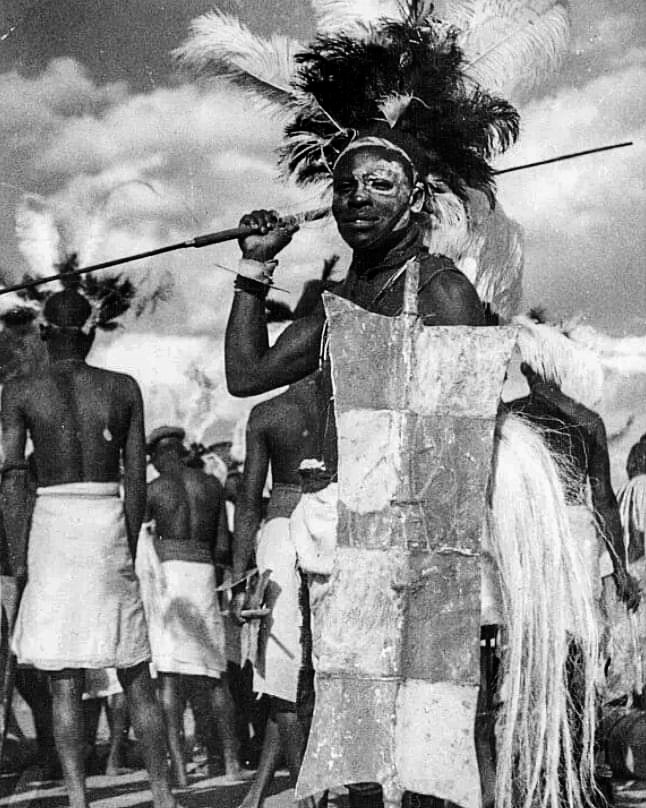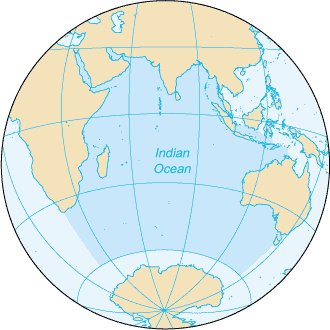|
Zaramo People
The Zaramo people, also referred to as Dzalamo or Saramo, are a Bantu ethnic group native to the central coast of Tanzania, particularly Dar es Salaam Region and Pwani Region. They are the largest ethnic group in and around Dar es Salaam, the former capital of Tanzania and the 7th largest city in Africa. Estimated to be about 0.7 million people, over 98% of them are Muslims, more specifically the Shafi'i school of Sunni Islam. Their culture and history have been shaped by their dwelling in both urban and rural landscapes. Origin By oral tradition, the Zaramo are said to be descendants of the Shomvi people under the lead of the warrior-hero, Pazi in the early 19th century. The Shomvi, a mercantile clan living in what is present-day Dar Es Salaam were attacked by an offshoot group of Kamba people from Kenya. The Shomvi sought help from the warrior, Pazi, who lived in the hinterlands. When Pazi defeated the Kamba, he asked for salt, cloth, and other luxuries in return. When the Sho ... [...More Info...] [...Related Items...] OR: [Wikipedia] [Google] [Baidu] |
Kamba People
The Kamba or Akamba (sometimes called Wakamba) people are a Bantu ethnic group who predominantly live in the area of Kenya stretching from Nairobi to Tsavo and north to Embu, in the southern part of the former Eastern Province. This land is called ''Ukambani'' and constitutes Makueni County, Kitui County and Machakos County. They also form the second largest ethnic group in 8 counties including Nairobi and Mombasa counties. Origin The Kamba are of Bantu origin.Joseph Bindloss, Tom Parkinson, Matt Fletcher, ''Lonely Planet Kenya'', (Lonely Planet: 2003), p.35. They are closely related in language and culture to the Kikuyu, the Embu, the Mbeere and the Meru, and to some extent relate closely to the Digo and the Giriama of the Kenyan coast. Kambas are concentrated in the lowlands of southeast Kenya from the vicinity of Mount Kenya to the coast. The first group of Kamba people settled in the present-day Mbooni Hills in the Machakos District of Kenya in the second half of ... [...More Info...] [...Related Items...] OR: [Wikipedia] [Google] [Baidu] |
Kimbamanduka
Kimbamanduka (fl. 19th-century) was a Tanzanian elephant hunter, warrior and ''pazi'' (chief) of the Zaramo people in the Pugu Hills area.Pugu Hills Nature Centre at The Africa Guide From , Kimbamanduka is remembered for helping the (now, Dar es Salaam) people for protection against the attacks and expansion of the from |
Hand Made Baskets
A hand is a prehensile, multi-fingered appendage located at the end of the forearm or forelimb of primates such as humans, chimpanzees, monkeys, and lemurs. A few other vertebrates such as the koala (which has two opposable thumbs on each "hand" and fingerprints extremely similar to human fingerprints) are often described as having "hands" instead of paws on their front limbs. The raccoon is usually described as having "hands" though opposable thumbs are lacking. Some evolutionary anatomists use the term ''hand'' to refer to the appendage of digits on the forelimb more generally—for example, in the context of whether the three digits of the bird hand involved the same homologous loss of two digits as in the dinosaur hand. The human hand usually has five digits: four fingers plus one thumb; these are often referred to collectively as five fingers, however, whereby the thumb is included as one of the fingers. It has 27 bones, not including the sesamoid bone, the number of whi ... [...More Info...] [...Related Items...] OR: [Wikipedia] [Google] [Baidu] |
Brooklyn Museum 88
Brooklyn () is a borough of New York City, coextensive with Kings County, in the U.S. state of New York. Kings County is the most populous county in the State of New York, and the second-most densely populated county in the United States, behind New York County (Manhattan). Brooklyn is also New York City's most populous borough,2010 Gazetteer for New York State . Retrieved September 18, 2016. with 2,736,074 residents in 2020. Named after the Dutch village of |
Mwana Hiti Figure , a song by Daniel Vangarde and Jean Kluger
{{disambiguation ...
Mwana may refer to *Mwana (name) *Mwana Mwinga, a settlement in Kenya *Mwana Africa F.C., a Zimbabwean football club *Aie a Mwana "Aie a Mwana" is a song originally written by the French-Belgian writing and production team of Daniel Vangarde and Jean Kluger. It was first recorded in 1971 under the title "Aieaoa" on the album ''Le Monde fabuleux des Yamasuki''. In 1975, a v ... [...More Info...] [...Related Items...] OR: [Wikipedia] [Google] [Baidu] |
Zaramo People Tanzania Africa
The Zaramo people, also referred to as Dzalamo or Saramo, are a Bantu ethnic group native to the central coast of Tanzania, particularly Dar es Salaam Region and Pwani Region. They are the largest ethnic group in and around Dar es Salaam, the former capital of Tanzania and the 7th largest city in Africa. Estimated to be about 0.7 million people, over 98% of them are Muslims, more specifically the Shafi'i school of Sunni Islam. Their culture and history have been shaped by their dwelling in both urban and rural landscapes. Origin By oral tradition, the Zaramo are said to be descendants of the Shomvi people under the lead of the warrior-hero, Pazi in the early 19th century. The Shomvi, a mercantile clan living in what is present-day Dar Es Salaam were attacked by an offshoot group of Kamba people from Kenya. The Shomvi sought help from the warrior, Pazi, who lived in the hinterlands. When Pazi defeated the Kamba, he asked for salt, cloth, and other luxuries in return. When the Sh ... [...More Info...] [...Related Items...] OR: [Wikipedia] [Google] [Baidu] |
Barghash Bin Said Of Zanzibar
Sayyid Barghash bin Said al-Busaidi,(1836 – 26 March 1888) ( ar, برغش بن سعيد البوسعيد), was an Omani Sultan and the son of Said bin Sultan, was the second Sultan of Zanzibar. Barghash ruled Zanzibar from 7 October 1870 to 26 March 1888. Early life and reign Barghash was born around 1836–1838 to Omani sultan, Said bin Sultan and an Ethiopian concubine. He was described as having sharp and charming character. He succeeded his elder half-brother Majid in 1871, having openly and adamantly contested his rule, and at one point was arrested for treason and exiled to India and Bombay. Upon becoming sultan his reign became successful and is credited with building much of the infrastructure of Stone Town, including piped water, public baths, a police force, roads, parks, hospitals and large administrative buildings such as the (Bait el-Ajaib) House of Wonders. He was perhaps the last Sultan to maintain a measure of true independence from European control. He did co ... [...More Info...] [...Related Items...] OR: [Wikipedia] [Google] [Baidu] |
Zanzibar
Zanzibar (; ; ) is an insular semi-autonomous province which united with Tanganyika in 1964 to form the United Republic of Tanzania. It is an archipelago in the Indian Ocean, off the coast of the mainland, and consists of many small islands and two large ones: Unguja (the main island, referred to informally as Zanzibar) and Pemba Island. The capital is Zanzibar City, located on the island of Unguja. Its historic centre, Stone Town, is a World Heritage Site. Zanzibar's main industries are spices, raffia and tourism. In particular, the islands produce cloves, nutmeg, cinnamon, and black pepper. For this reason, the Zanzibar Archipelago, together with Tanzania's Mafia Island, are sometimes referred to locally as the "Spice Islands". Tourism in Zanzibar is a more recent activity, driven by government promotion that caused an increase from 19,000 tourists in 1985, to 376,000 in 2016. The islands are accessible via 5 ports and the Abeid Amani Karume International Airport, w ... [...More Info...] [...Related Items...] OR: [Wikipedia] [Google] [Baidu] |
Kenya
) , national_anthem = "Ee Mungu Nguvu Yetu"() , image_map = , map_caption = , image_map2 = , capital = Nairobi , coordinates = , largest_city = Nairobi , official_languages = Constitution (2009) Art. 7 ational, official and other languages"(1) The national language of the Republic is Swahili. (2) The official languages of the Republic are Swahili and English. (3) The State shall–-–- (a) promote and protect the diversity of language of the people of Kenya; and (b) promote the development and use of indigenous languages, Kenyan Sign language, Braille and other communication formats and technologies accessible to persons with disabilities." , languages_type = National language , languages = Swahili , ethnic_groups = , ethnic_groups_year = 2019 census , religion = , religion_year = 2019 census , demonym = ... [...More Info...] [...Related Items...] OR: [Wikipedia] [Google] [Baidu] |
Shafi‘i
The Shafii ( ar, شَافِعِي, translit=Shāfiʿī, also spelled Shafei) school, also known as Madhhab al-Shāfiʿī, is one of the four major traditional schools of religious law (madhhab) in the Sunnī branch of Islam. It was founded by Arab theologian Muḥammad ibn Idrīs al-Shāfiʿī, "the father of Muslim jurisprudence", in the early 9th century. The other three schools of Sunnī jurisprudence are Ḥanafī, Mālikī and Ḥanbalī. Like the other schools of fiqh, Shafii recognize the First Four Caliphs as the Islamic prophet Muhammad’s rightful successors and relies on the Qurʾān and the "sound" books of Ḥadīths as primary sources of law. The Shafi'i school affirms the authority of both divine law-giving ( the Qurʾān and the Sunnah) and human speculation regarding the Law. Where passages of Qurʾān and/or the Ḥadīths are ambiguous, the school seeks guidance of Qiyās (analogical reasoning). The Ijmā' (consensus of scholars or of the community ... [...More Info...] [...Related Items...] OR: [Wikipedia] [Google] [Baidu] |
Tanzania
Tanzania (; ), officially the United Republic of Tanzania ( sw, Jamhuri ya Muungano wa Tanzania), is a country in East Africa within the African Great Lakes region. It borders Uganda to the north; Kenya to the northeast; Comoro Islands and the Indian Ocean to the east; Mozambique and Malawi to the south; Zambia to the southwest; and Rwanda, Burundi, and the Democratic Republic of the Congo to the west. Mount Kilimanjaro, Africa's highest mountain, is in northeastern Tanzania. According to the United Nations, Tanzania has a population of million, making it the most populous country located entirely south of the equator. Many important hominid fossils have been found in Tanzania, such as 6-million-year-old Pliocene hominid fossils. The genus Australopithecus ranged across Africa between 4 and 2 million years ago, and the oldest remains of the genus ''Homo'' are found near Lake Olduvai. Following the rise of '' Homo erectus'' 1.8 million years ago, humanity spread ... [...More Info...] [...Related Items...] OR: [Wikipedia] [Google] [Baidu] |




